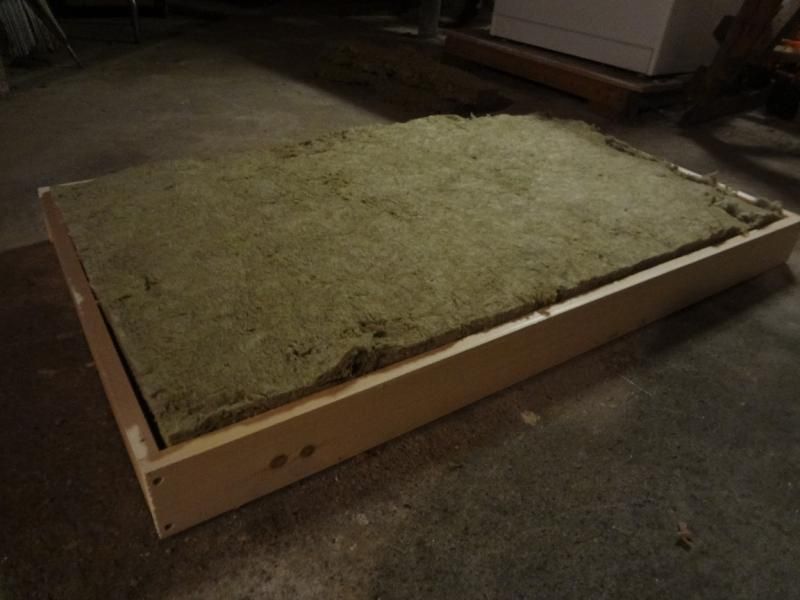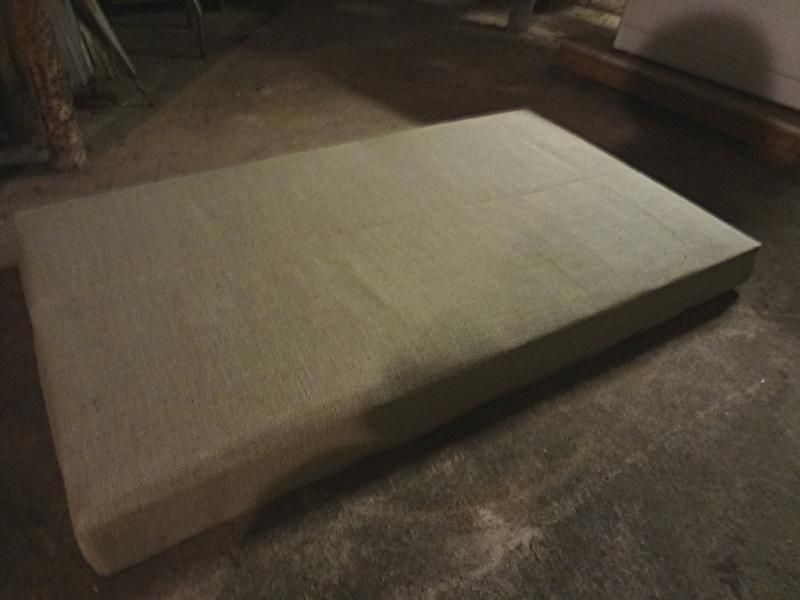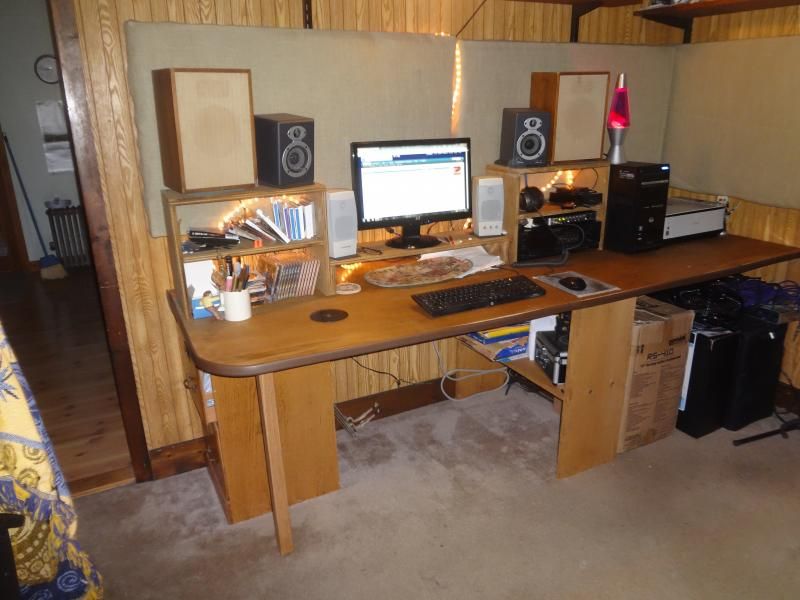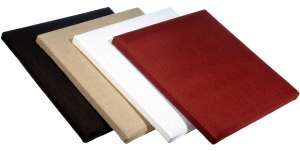
 |
|
#16
|
|||
|
|||
|
That is good to know! They should be great speakers in that case.
__________________
Warren My website: http://draudio56.wix.com/warren-bendler "It's hard...calming the Beatle inside of me." |
|
#17
|
|||
|
|||
|
Quote:
Quote:
I have heard both positive and negative reviews of the Yamaha HS series (bigger get better reviews than the smaller ones, and the newer series better than the older series). They were on my radar until the JBLs came out. Equators were out of my price range (as were the bigger Yammies)
__________________
Mike My music: https://mikebirchmusic.bandcamp.com 2020 Taylor 324ceBE 2017 Taylor 114ce-N 2012 Taylor 310ce 2011 Fender CD140SCE Ibanez 12 string a/e 73(?) Epiphone 6830E 6 string 72 Fender Telecaster Epiphone Dot Studio Epiphone LP Jr Chinese Strat clone Kala baritone ukulele Seagull 'Merlin' Washburn Mandolin Luna 'tatoo' a/e ukulele antique banjolin Squire J bass |
|
#18
|
||||
|
||||
|
I listened to the Yamaha HS5 in the store, and to me they sounded too clinical, kind of an aggrevating sound that I thought would get on my nerves listening for an length of time.
__________________
Chuck 2012 Carruth 12-fret 000 in Pernambuco and Adi 2010 Poling Sierra in Cuban Mahogany and Lutz 2015 Posch 13-fret 00 in Indian Rosewood and Adi |
|
#19
|
|||
|
|||
|
[QUOTE=MikeBmusic;4117253]I'm not familiar with their foam panels - but what is the actual construction? Foam less than 6" thick will not attenuate low frequencies.
They don't offer any frequency attenuation specs for the cotton insulation. Rockwool is not bad to deal with - compared with the fluffy fiberglass insulation. I didn't even bother with gloves. When you construct traps, you make the frames, place them on top of your covering cloth, then take the insulation out of the box, lay it down in the frame, then seal up the cloth around the frame (stapling is the easy way) and you're done. Minimal handling and once enclosed no fibers to worry about. Mike, Are you using the rigid insulation? I see drawings showing construction of traps with a ply back , which would be needed I think if the insulation is loose or non rigid. If the insulation , Owens 703 or Manville 814 is used with a wood outer edge frame with fabric on front and back . Is this what you do? In this video the guy is using rock wool , the only thing different I might do would be to use a couple of cross bars to keep the frame from racking. https://www.youtube.com/watch?v=Jr5HQR8Ox54 thanks Chuck and Mike on the Yamaha feedback |
|
#20
|
||||
|
||||
|
I have a pair of Rokit 6s. They work just fine. Never had any reliability issues with them. But, the Rokit series have a bass port, which really isn't the best way to go with a monitor for acoustic. If I had it to do again I would probably get the Yamaha speakers or some other brand without bass ports.
Todd
__________________
https://www.mcmakinmusic.com |
|
#21
|
|||
|
|||
|
Quote:
Construction method: 1x4" pine (cheap stuff) cut to length, then assembled the frames with 1-1/2" screws. I used burlap for the cover material, which has a fair amount of stretch to it, but is strong, so I had to really pull it taut on the front face first - I did this, put a few staples into the back to hold it, then laid the insulation in, pulled the burlap tight over the back, trimmed, then stapled. For my cloud panels, I had 3" Roxul Safe 'n' Sound which someone gave me, so I split 1x4s down the length, made the frames the same way as hte other traps, and used muslin sheet (much less stretch) as the covers. Once the cloth is stapled into place, they are all pretty stiff, the insulation doesn't try to settle, and they don't sway, so no need for diagonal bracing - make sure the rockwool fits tightly into the frame (measure twice, cut once) and it serves to keep it all rigid. I can post some pictures, if you want, but its no different than what you can find with some youtube 'how to' videos.
__________________
Mike My music: https://mikebirchmusic.bandcamp.com 2020 Taylor 324ceBE 2017 Taylor 114ce-N 2012 Taylor 310ce 2011 Fender CD140SCE Ibanez 12 string a/e 73(?) Epiphone 6830E 6 string 72 Fender Telecaster Epiphone Dot Studio Epiphone LP Jr Chinese Strat clone Kala baritone ukulele Seagull 'Merlin' Washburn Mandolin Luna 'tatoo' a/e ukulele antique banjolin Squire J bass |
|
#22
|
|||
|
|||
|
Quote:
Mike what you say makes sense about the ply back, I was thinking structure and not keeping a clear idea what the function of the panels were for . Still looking for an alternative to glas or stuff with loose nasty fiber. I found an article on SOS that has pointed me to this stuff: Ultra Touch the link to Home Depot shows the price for a whole pallet http://www.homedepot.com/p/UltraTouc...FQhbfgodSAkAKw the acoustic specs are at the bottom of this page: see link below http://www.bondedlogic.com/pdf/denim...n-brochure.pdf As a novice , I am not able to analyze these numbers properly yet (they are coefficients so the higher the better I think ) so let me know what you think if convenient for you and once again thanks Last edited by gtonesine; 09-05-2014 at 06:12 PM. |
|
#23
|
||||
|
||||
|
Quote:
__________________
Chuck 2012 Carruth 12-fret 000 in Pernambuco and Adi 2010 Poling Sierra in Cuban Mahogany and Lutz 2015 Posch 13-fret 00 in Indian Rosewood and Adi |
|
#24
|
|||
|
|||
|
1x4 frame
 Insulation laid in - you can see there really not any 'loose fibers' with this stuff, unlike 'fluffy fiberglass.  Burlap covering it all.  Here you can see 3 of the traps in place - 2 on my 'front' wall, and one to the side. I've got 3 more behind me, plus corner superchunks plus ceiling cloud traps. Have to take a new picture now with my new JBL monitors in place! 
__________________
Mike My music: https://mikebirchmusic.bandcamp.com 2020 Taylor 324ceBE 2017 Taylor 114ce-N 2012 Taylor 310ce 2011 Fender CD140SCE Ibanez 12 string a/e 73(?) Epiphone 6830E 6 string 72 Fender Telecaster Epiphone Dot Studio Epiphone LP Jr Chinese Strat clone Kala baritone ukulele Seagull 'Merlin' Washburn Mandolin Luna 'tatoo' a/e ukulele antique banjolin Squire J bass |
|
#25
|
||||
|
||||
|
Regarding acoustic panels, IMO just get professionally premade ones, and I suggest ATS:
 http://www.atsacoustics.com/cat--ATS...nels--100.html Wall mounting http://www.atsacoustics.com/item--ac...are--IK12.html Ceiling mounting http://www.atsacoustics.com/cloud-in...-hardware.html also read FAQ http://www.atsacoustics.com/page--Ac...FAQs--faq.html
__________________
Derek Coombs Youtube -> Website -> Music -> Tabs Guitars by Mark Blanchard, Albert&Mueller, Paul Woolson, Collings, Composite Acoustics, and Derek Coombs "Reality is that which when you stop believing in it, doesn't go away." Woods hands pick by eye and ear
Made to one with pride and love To be that we hold so dear A voice from heavens above |
|
#26
|
|||
|
|||
|
I replaced a pair of Rockit 5" monitors with Equator D5's; big improvement. I eventually replaced the D5's with Dynaudio BM5A's, which I do like better than the Equator speakers. I'm glad I do hear a difference, since the Dynaudio speakers were significantly more expensive. If I were on a tight budget, I wouldn't hesitate to get a pair of the Equators.
I have yet to acoustically treat my "studio"/office space, but when I do, I'll purchase panels from these folks: http://www.atsacoustics.com/ I don't have any direct experience with their products, but based on the information available on their web site (and the price), I'd be comfortable ordering from them. Although all aspects of the recording chain from room acoustics to monitors are important, in general it's a good idea to allocate a significant portion of your budget to transducers; basically microphones and speakers. I'm not saying that mic preamps and AD converters won't affect the quality of a recording, but I'd still look at mics and monitors first. Don |
|
#27
|
|||
|
|||
|
Quote:
The long, long, long standing wives tale that one should choose a studio monitor that is accurate, flat response (or even less fatiguing) seems to fool a lot of people. A studio monitor can only be as accurate (or not) as the room that they sit in. You quite possible could have an enormously accurate speaker (based on the manufacturer's spec's which were measured in a flat environment) turn into a monster of sonic tom-foolery in a room that's not flat (which is of course virtually every home studio on the planet). You simply can not "buy" a pair of monitors and then assume they're giving you a flat response. It's a virtual impossibility unless you're confident you're in a flat response room to begin with. The industry tried to sugar coat this problem by referring to monitor as "near-field" which was to give the impression that "in the near field" anomalies don't show up. That of course is a silly and comical reference. Secondarily (and not directed at this post specifically but as a broad brush stroke) you really can't effectively "treat a room" with anything (rockwool wool/auralex/egg cartons/foam/bass traps/clouds ect without first knowing what the actual problems are. Throwing up rockboard/rockwool very well could help with acoustic anomalies but is fairly worthless endeavor unless you first identify what those anomalies are. I suppose you could do it and "hope" you've guessed right but every room is a snowflake, no two are even remotely a sonic match. I dunno about other areas of the country but here in Los Angeles, Dolby Labs offers a fairly cheap "room tuning" service. Right now Waves is offering a dual 31 band EQ for $99.00. That EQ and a Dolby Labs tuning session will give you and your room a VERY real picture of what exactly the problems are in your specific studio, it will further give you an immediate solution (the Waves EQ) and then a much clearer path to take if you want to address your rooms with treatment instead of an eq. Any other path is an absolute and complete guessing game. Quote:
|
|
#28
|
||||
|
||||
|
__________________
Derek Coombs Youtube -> Website -> Music -> Tabs Guitars by Mark Blanchard, Albert&Mueller, Paul Woolson, Collings, Composite Acoustics, and Derek Coombs "Reality is that which when you stop believing in it, doesn't go away." Woods hands pick by eye and ear
Made to one with pride and love To be that we hold so dear A voice from heavens above |
|
#29
|
|||
|
|||
|
Quote:
__________________
Warren My website: http://draudio56.wix.com/warren-bendler "It's hard...calming the Beatle inside of me." |
|
#30
|
|||
|
|||
|
Quote:
No Yama this is wrong. Let's say we're auditioning sounds in GC Hollywood studio room (gawd forbid). That room (hypothetically and because of it's material construction) is 9dB artificially heavy at 2.3k, 3.4k and 125Hz. Now you have that extremely HEAVY influence of +9db@ 2.3,.3.4 and down at 125Hz while you're listening. You then proceed to make some in store, sonic judgment as to which of the 3 monitor brands your auditioning sounds most flat to you and ultimately come to some sonic conclusions. Of course remember that whatever eq curve/repsonse that particular brand is offering you is HIGHLY skewed by the GC room. The old wives tale that jazz or classical music is a better choice of audition material is just that...a wives tale. It absolutely doesn't matter what program material you've chosen as each and everyone one of those monitors (first and foremost) generates sound to your ear that is grandly influenced by that room, which of course is not flat. You may in fact come to a conclusion that monitors "B" are the most neutral in the GC room and they well may be (in the GC room). All of those conclusions however go flinging out the window when you get home to a room that's NOT +9db heavy at 125, 2.3 and 3.4 but indeed (hypothetically) your room is +9dB heavy at 400Hz, 4.1 and 6.5. Last edited by Joseph Hanna; 09-07-2014 at 04:11 PM. |